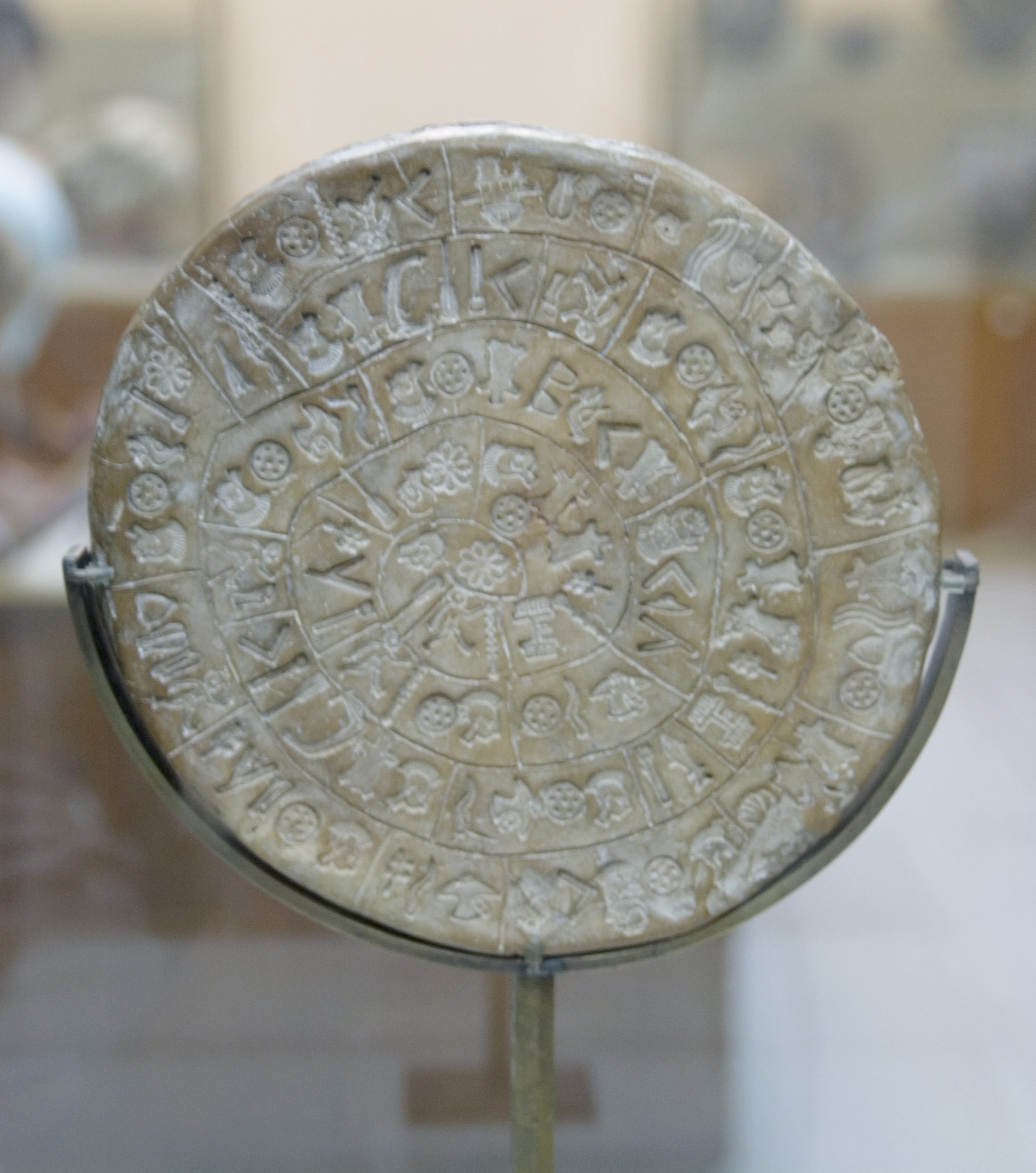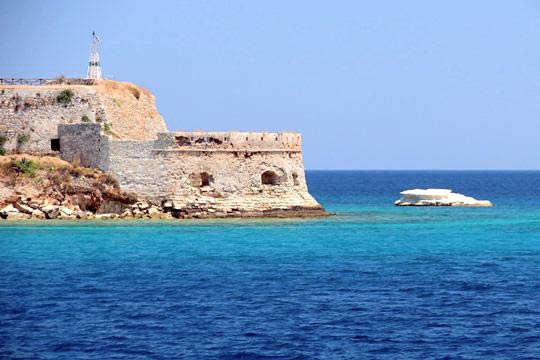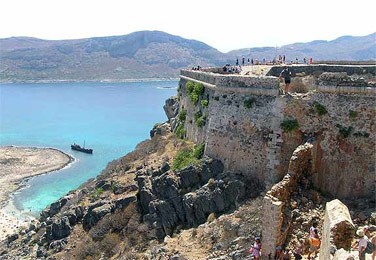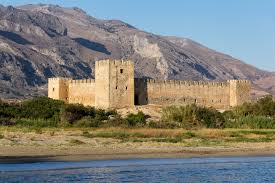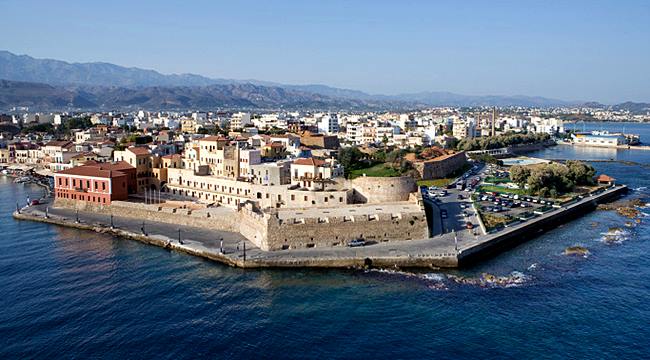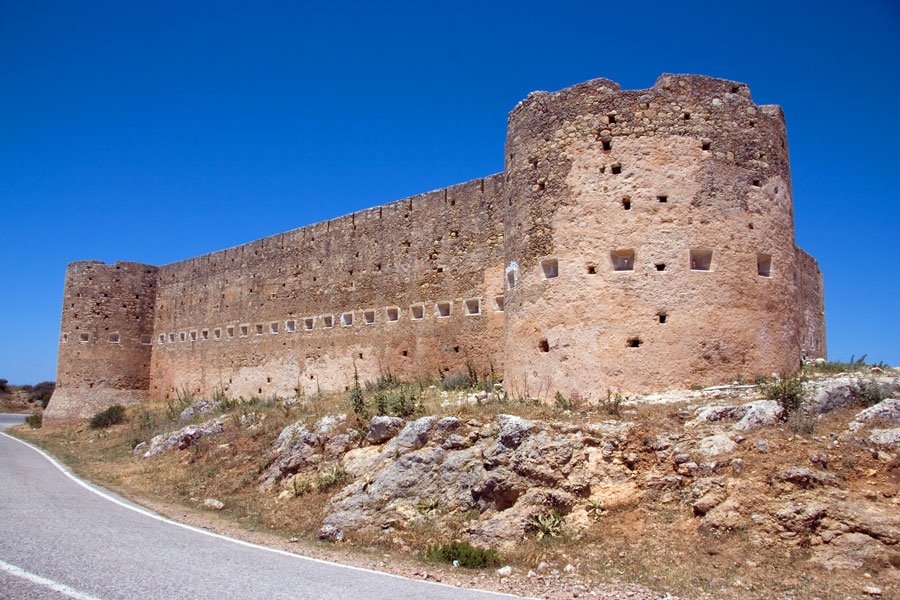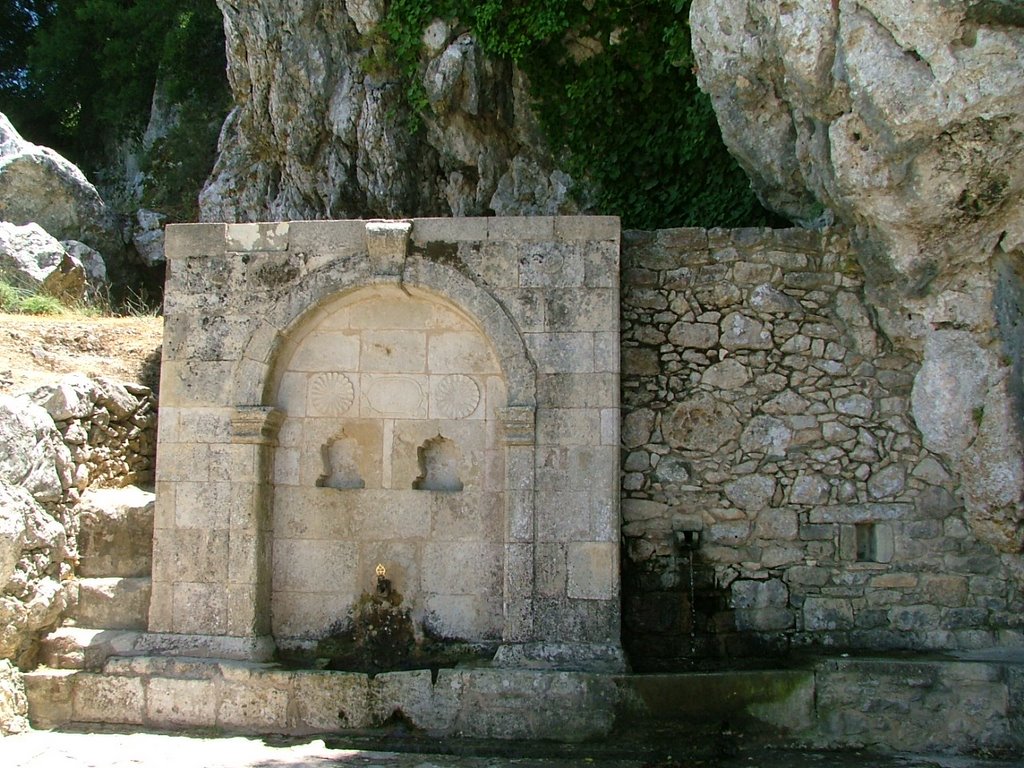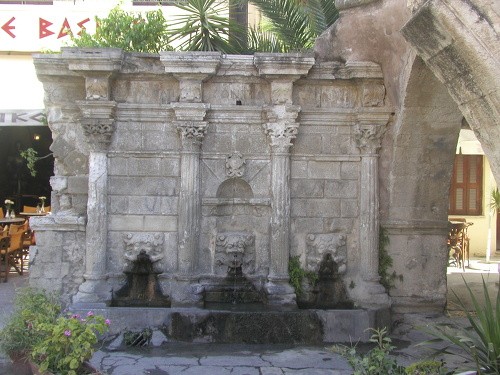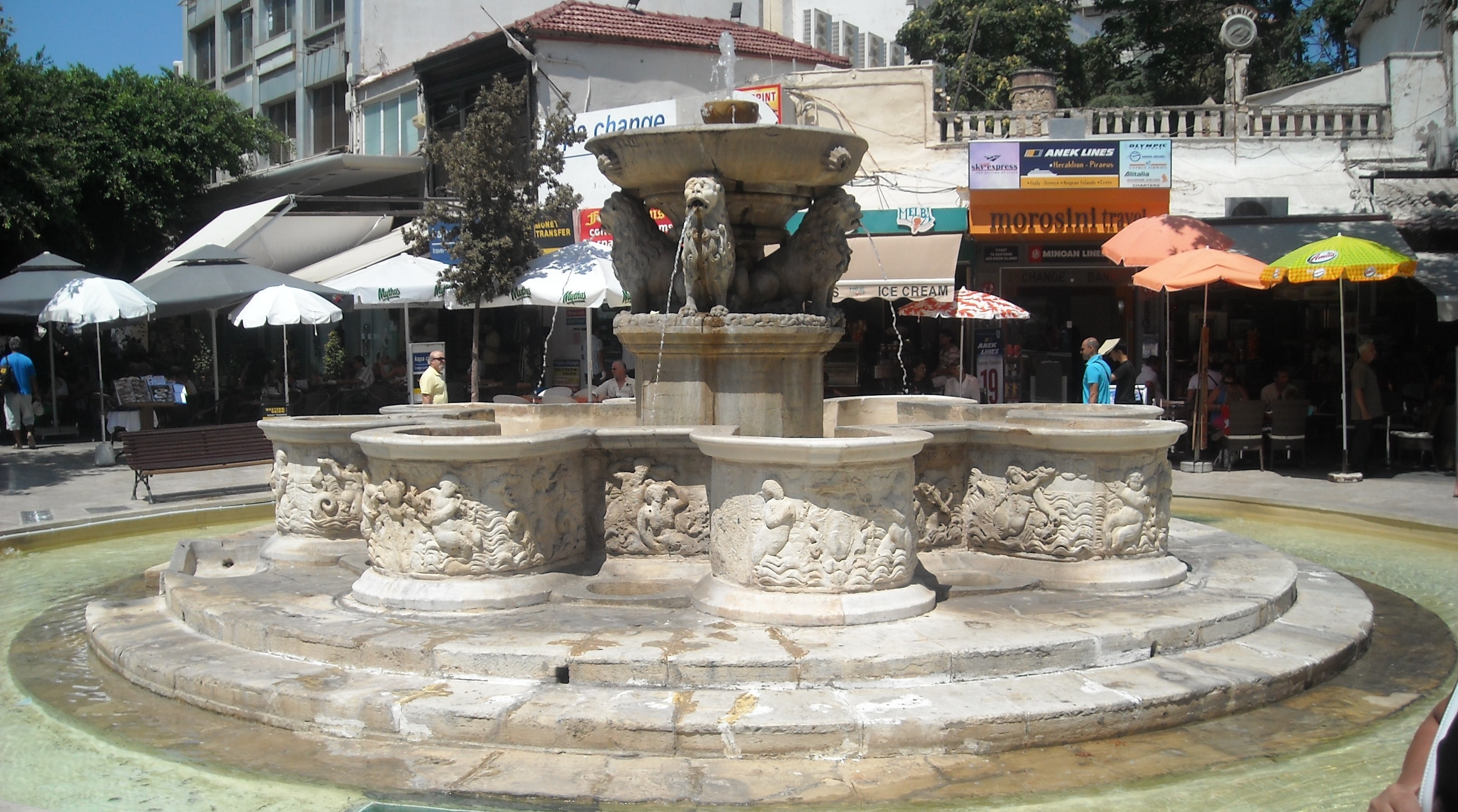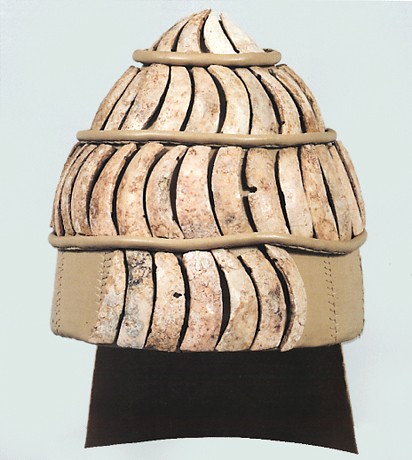The second largest palace of Crete after Knossos. The palace, just like the other palaces of Minoan Crete, was destroyed three times before it was rebuilt on the ruins of the old buildings in 1700 BC. Aesthetically, Phaistos is built on the most spectacular setting of all palaces in Crete, high on a dramatic hill, […]
Souda fort
Souda fort
The island was fortified by the Venetians due to its strategic location, controlling the entrance to the anchorage of Souda Bay (which is still an important Greek and NATO naval base). Although the rest of Crete fell to Ottoman control in the Cretan War (1645–1669), the fortress of Souda (along with the island fortresses of […]
Gramvousa
Gramvousa
From May to October, you can take daily cruises from Kissamos port (42 km west of Chania), leaving in the morning and returning in the evening. History: The castle on top of the island was built by the Venetians to protect Crete from a Turkish occupation. It was one of the last unconquered bastions and […]
Frangocastello Fortress
Frangocastello Fortress
In order to protect the small bay near by, from the pirates, it was decided, in 1371, to construct this fortress. It was barely used during the Venetian occupation, and on the eve of the Turkish attack, it was actually abandoned. In 1828 the Cretan rebels occupied the fortress and during the siege that followed, […]
Fort Firkas
Fort Firkas
Fort Firkas is by the Venetian port of Chania. Firkas (military unit) was built in 1629 and is considered a significant historic monument for Crete. In February 16th 1897, the flag of the Great Powers was raised here, pronouncing Crete’s autonomy. At the same place, 16 years later, on December 1st 1913, Eleftherios Venizelos witnessed […]
Aptera castle
Aptera castle
One of the most important cities of ancient (7th c. B.C.) western Crete. Aptera was built on a site 15 km. from Chania, south of Souda bay, near the village of Megala Horafia, which had a view of the whole plain of Chania. The city walls still standing today are reminiscent of the Cyclopean walls […]
Fountain Voila
Fountain Voila
The settlement of Voila is 1km away from the village of Handras. It is a medieval deserted village protected by the Greek Archaeological Authorities. The name of the village probably comes from the Byzantine word VOILAS or VOLIAS meaning the nobleman, the land owner.
Rimondi Fountain
Rimondi Fountain
Rimondi, the Rector of the city, built the famous Rimondi Fountain, which is situated at present day Platanos Square, formerly the centre of Venetian city life, in 1626. The water runs from three spouts in the shape of a lion’s head into three sinks.
Fountains of Heraklion
Fountains of Heraklion
One of the most known fountains of Heraklion, point of reference for its inhabitants, but also for the visitors. Today it is one of the most beautiful monuments of the city situated at the center of the most busy square – Eleftherios Venizelos sq. – of the town The Venetian General Provisioner of Candia (Crete […]
Rethymno Archaeological Museum
Rethymno Archaeological Museum
Late Neolithic (3500-2900 B.C.) and Early Minoan (2800-2100 B.C.) finds from the caves Gerani, Melidoni, Margeles and Helenes, finds from the buildings at Apodoulou, Monastiraki and the peak sanctuary at Vrysinas, dated to the Middle Minoan period (2100-1600 B.C.) Late Minoan finds (1600-1100 B.C.) from the cemeteries, the most representative being that of Armenoi finds […]
